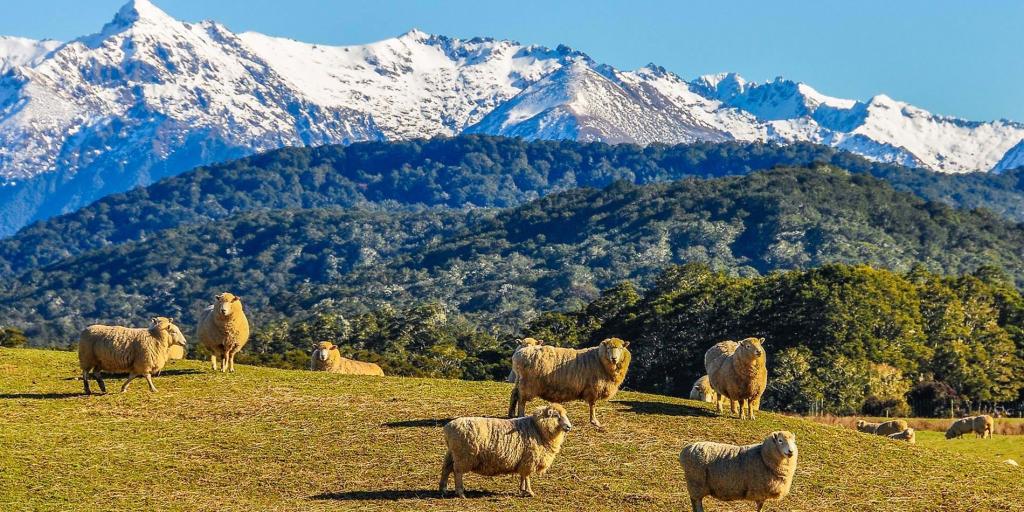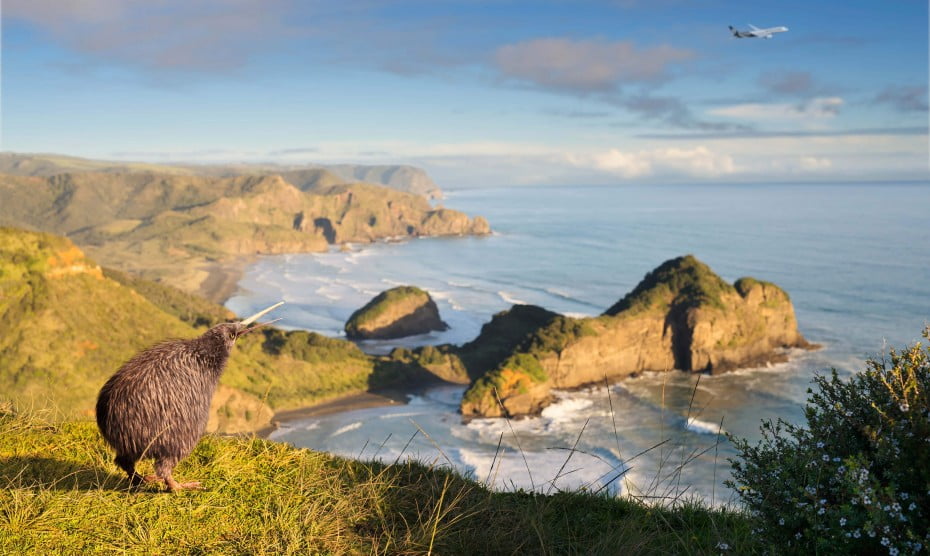A selection of interesting facts about New Zealand will tell about some events from the history of this country located in the Southern Hemisphere, about geography, climate, inhabitants, entertaining and amazing incidents, as well as nature and animals.
History of discovery and settlement
The history of the settlement of people in New Zealand totals only 1 thousand years when the first people, representatives of the Maori tribe, came here from Polynesia. They began to engage in hunting and agriculture.
In accordance with historical facts about New Zealand, the first resident from Europe who stepped on this land and saw its beauty was the traveler Abel Tasman from Holland. In 1642, he went here on the instructions of the Governor of Dutch India.
However, Tasman's acquaintance with the local population of the island ended tragically: the New Zealanders killed 4 sailors from his ship, and this affected the reluctance of settlers to come here in the future. And the Maori in these years calmly engaged in ordinary activities.
More than 100 years passed before the ships of J. Cook (1769) sailed here, which was engaged in surveying the coast and was able to determine the presence of not one but two islands at once, the strait between which was later named after him. Cook devoted 3 months to New Zealand, cruising between the islands and marking the coastline.
Only after Cook's expedition did settlers from Europe come here, as well as missionaries and whalers.
By the beginning of the 19th century the population of the islands totaled only 2 thousand Europeans, and the Māori population was much larger (about 100 thousand). As interesting facts about the country indicate, in New Zealand these 2 groups of residents coexisted quite peacefully. To offend or humiliate local Aborigines among Europeans was considered an unworthy thing. Visitors thought that they had come here to bring backward ideas of enlightenment and progressive innovations to the backward people.
Independence
In 1840, the Waitangi Treaty was concluded with the Maori, guaranteeing the protection of their property and civil rights, which were granted by Britain in exchange for the establishment of its power. During these years, the number of Europeans arriving in New Zealand increased sharply, and convicts (as in Australia) were not brought here.
In the 1860-1870s, there were small colonial conflicts between the local population and Europeans, mainly over the ownership of land. Gradually, the Maori population was declining due to mass diseases that were introduced by the arriving colonizers. In 1902, the process of assimilation ended successfully, the number of mixed marriages increased, many of them began to cooperate.
Since 1947, New Zealand became an independent dominion, and since 1986 this was reflected in the Constitution of the state.
Historical facts
Modern New Zealand is a rich country and one of the most comfortable in the world for the life of the population.
Interesting facts from the history of New Zealand:
- the islands became the last large land mass that was inhabited by people;
- the mapping of New Zealand was the last fact of this kind, which occurred only when previously unknown large areas of land were discovered;
- the first person to climb Mount Everest was New Zealander Edmund Hillary.
Geography and location
New Zealand is located almost at the edge of the world. The nearest land is 1.7 thousand km - this is Australia, which is separated by the Tasman Sea. Nature and climate here are unpredictable and very diverse. There are several active volcanoes on the islands that can change the surrounding landscape or landscape at any time.
The islands are dominated by a diverse landscape, ranging from mountains and hills to sandy beaches. 75% of the territory is located at an altitude of 200 m above sea level. Interesting facts about New Zealand, its climate and geographical features will be given below.
South and North Islands
The southern island is crossed by the famous mountain range called the Southern Alps. Here is the highest point - Mount Cook, around which there are another 18 peaks, the height of which exceeds 3 km. Glaciers descend through the slopes of the Southern Alps to the coast of the Tasman Sea. Here you can admire the beautiful and impressive fjords.
In the western regions of the island, large areas of ancient forests have been preserved, which are protected by the state, because they are unique, and nowhere else on the planet are there. Therefore, there are several national parks for their protection. This is also evidenced by one of the interesting facts about New Zealand that 1/3 of the country's territory is National Parks, which are under state protection.
The eastern regions of the island represent a more flat surface, the land of which is developed by man for agricultural purposes.
A large part of the country's population lives on the North Island. There is more gentle terrain, fewer mountains, but there is a high activity of volcanoes.
Curious Facts About New Zealand
- The country covers the territory of the islands, which are located in several climatic zones at once, from the subtropics to the cold southern regions. That is why New Zealand is considered the most diverse state in geography and climate in the world.
- The North Island is volcanoes, deserts and sandy tropical beaches, and the South Island is plains, mountains and glaciers.
- The state’s capital, Wellington, is the southernmost state capital on the planet.
- Although the islands have an unusual topography, none of them extends beyond 128 km.
- One of the most beautiful New Zealand lakes - Taupo was formed in the crater of an extinct volcano as a result of a powerful eruption 70 thousand years ago.
- 75% of the population lives in North Island, and 25% in Auckland (South Island);
- For each New Zealander there are 9 sheep, that is, their total number exceeds the country's population many times over.
- The famous Blue Lake is considered to be the most transparent in the water contained in it.
- Auckland is on the list of the most liveable cities in the world.
- The longest beach in the world, called the 145-kilometer- long beach, actually stretches for only 90 km.
- In Dunedin, the most steep street in the world is Baldwin, its angle of inclination is 38 °.

State and local authorities
The most interesting fact about New Zealand is the unitary structure of this state, that is, its governance is based on the principles of a constitutional monarchy (the country is nominally ruled by the Queen of Great Britain) and parliamentary democracy. Officially, the Kingdom is not a state, and therefore is not internationally recognized.
The country is divided into 17 regions (councils), in each of which local government operates. Each council is responsible for many areas: the transport system, environmental issues, etc.
In addition, there are 74 departments in the territory that are responsible for the region's communications, life support systems, construction supervision, etc.
Capital
The capital of New Zealand is the city of Wellington, in which more than 400 thousand people live. Its name is given by the name of Arthur Wesley, Duke of Wellington, who was the famous English commander who won the Battle of Waterloo, as well as the Prime Minister of Great Britain. The immortalization of his name took place as a thank you for the support and implementation of the successful principles for the colonization of the country, which were developed by the founder of the city, W. Wakefield.
Wellington has a few more nicknames:
- Wellwood (formed from the merger of the words Wellington and Hollywood);
- bay capital;
- City of winds.
The capital of New Zealand is located in the south-west of the North Island, in the place formed after the eruption of the volcano bay, and is included in the earthquake-prone zone. The bay is part of the Cook Strait, dividing 2 islands. The climate in it is subtropical marine.
Facts About Government
However, the list of interesting facts about New Zealand is not yet exhausted.
- New Zealand is the most sparsely populated country on the planet (about 4 million inhabitants).
- The country has two anthems at once: its own and the national anthem of Great Britain, because Queen Elizabeth the 2nd is formally considered the ruler, her duty is to approve the documents that are adopted by the local parliament.
- There are 2 official languages in the country - English and Maori, in which representatives of Polynesian aborigines are spoken.
- One of the official languages here is sign language.
- The state of New Zealand is one of the most calm and safe in the world, there is practically no corruption.
- Back in 1987, the country opposed the use and use of nuclear energy by man, so in the 21st century there is absolutely no nuclear power plant, and ships using atomic energy or having nuclear weapons on board do not have the right to enter it.
- The liberalism of politics in N. Zealand can be assessed by the fact that in 1893, for the first time in the world, the state gave it the right to vote for the weak half of humanity (women).

Animals and birds
Perhaps one of the most interesting facts about New Zealand is information about representatives of its wildlife.
- The symbol of the country is the non-flying kiwi bird, which is also shown on the logo of the country's air forces.
- In New Zealand there are no snakes at all, but there are many lizards living at an altitude of almost 2 km (geckos and skinks).
- Before the islands were inhabited by humans, the only endemic mammals here were 3 species of bats: long and short tailed, as well as winged wings, the latter catch prey on the surface of the earth, moving along the grass in the forest with the help of folded wings.
- Another species of endemic animals is frogs, which have remained virtually unchanged over the past 70 million years.
- Now there is a maximum number of penguin species that no longer exist, but seals and whales were almost completely exterminated in the 19th century.
- The islands are home to the giant predatory snail Powelliphanta, which feeds on earthworms.
The above facts about New Zealand make it possible to rightfully call this state, its structure, inhabitants, climate and nature unique and extraordinary.